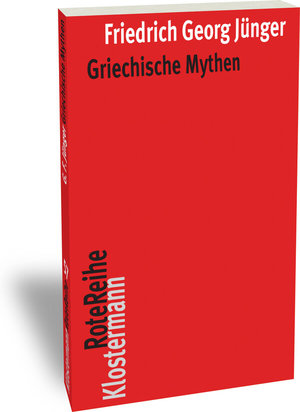
Griechische Mythen
von Friedrich Georg JüngerFriedrich Georg Jüngers Buch erschien zuerst 1947. Das gründlich nach den Quellen gearbeitete Werk über die Religion der Griechen ist zugleich das künstlerische Unternehmen, persönliches Erlebnis, eigene Erfahrung und Überzeugungen vom griechischen Mythos her zu erhellen. Jünger erzählt nicht (im Imperfekt) die Mythen der Griechen, sondern gibt (im Präsens) Wesensaussagen: 'Sein' und 'Wesen' sind seine Leitbegriffe. Er spricht nicht von der Offenbarung des Göttlichen in der Epiphanie von Göttergestalten; es geht ihm um das Wesen des Menschen, Bestimmungen seiner Welt. Das Buch besteht aus drei Teilen: Titanen, Götter, Heroen. Die Trennung der Titanen von den Göttern Apollon, Pan und Dionysos und die ausführliche Darstellung Pans sind die entscheidenden Pointen Jüngers. Mit den Begriffen des Titanischen und des Panischen ergänzt und fundiert er das Klassisch-Olympische um archaische, elementare und chthonische Kräfte und Wesenselemente des Menschen. So entsteht ein plastisches und lebensnahes Bild der griechischen Mythen.
Friedrich Georg Jünger's book was first published in 1947. This work on the religion of ancient Greece, While based on a thorough reading of the sources, this essay on the religion of ancient Greece also represents the author´s attempt to artistically elucidate personal experiences and beliefs by way of his interpretative narration of Greek myths. Yet Jünger does not simply narrate them, but lays bare representations of their essential meaning: 'being' and 'essence' are his guiding concepts. It is not the revelation of the divine in the epiphany of godheads he is predominantly interested in; rather, he is concerned with the essence of man and the determinations of his world. The book consists of three parts on Titans, Gods, and Heroes, respectively. The separation of the Titans from the gods Apollon, Pan and Dionysos and the detailed representation of Pan are Jünger´s key points. Employing his concepts of the Titanic and the Panic, he supplements and substantiates the classic panorama of the Olympians as told in their myths with archaic, elementary and chthonic forces and essential elements of man. In this way, Jünger creates a vivid as well as realistic picture of Greek mythology.







